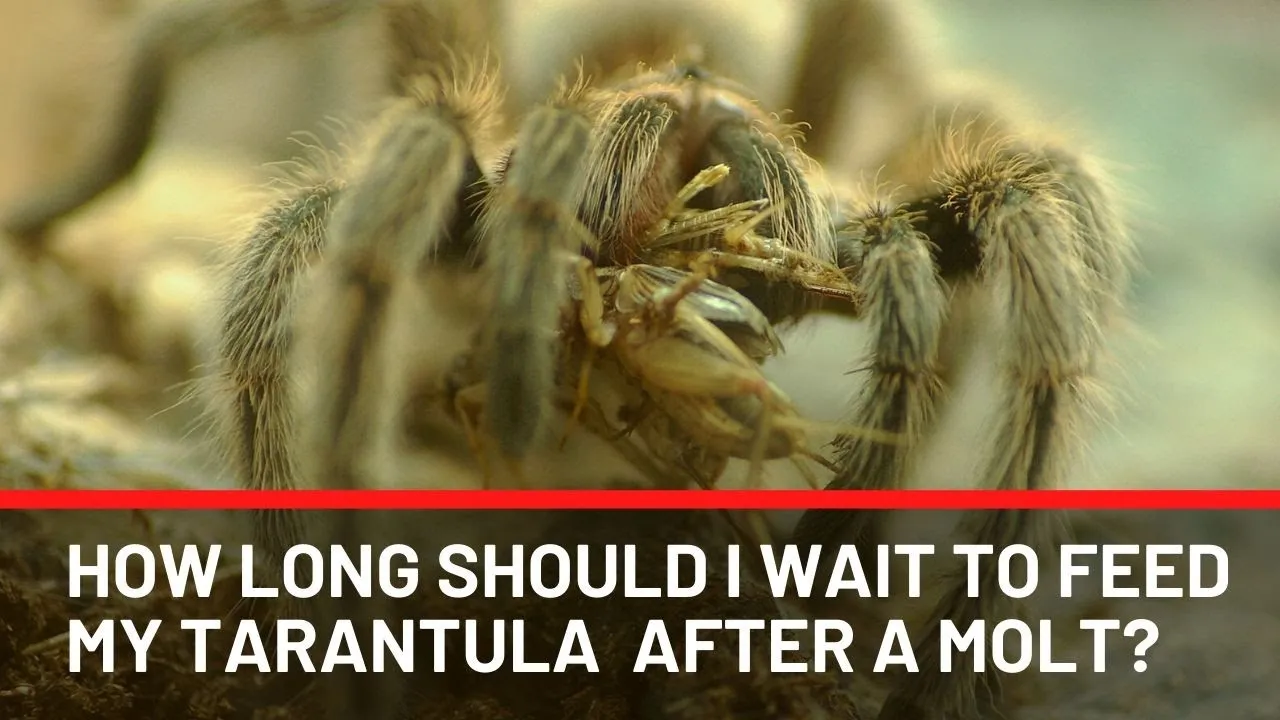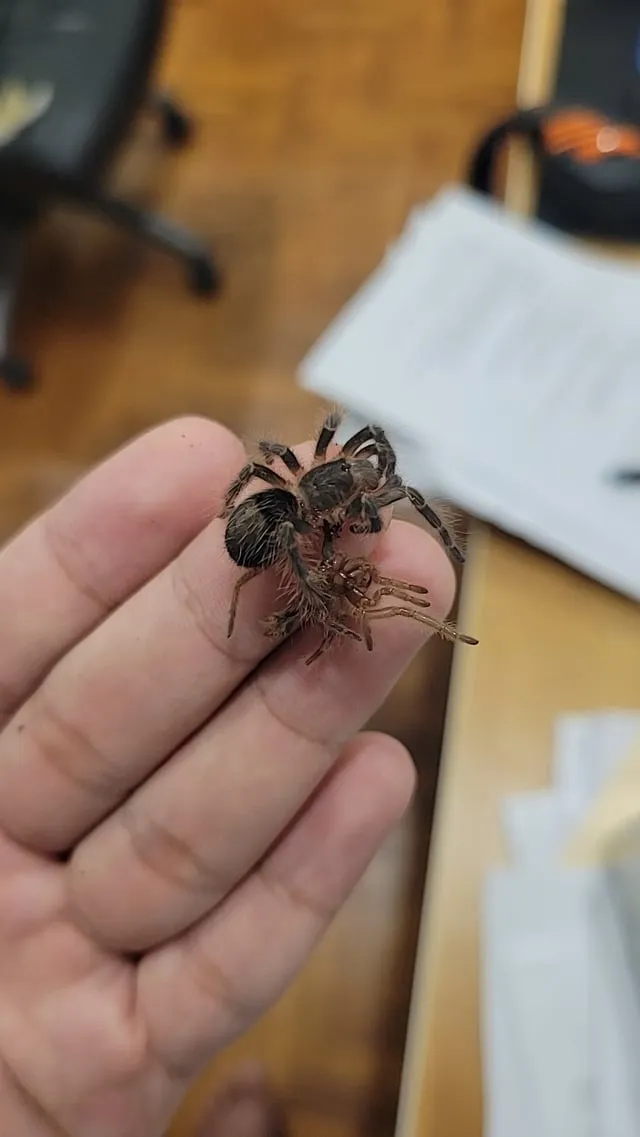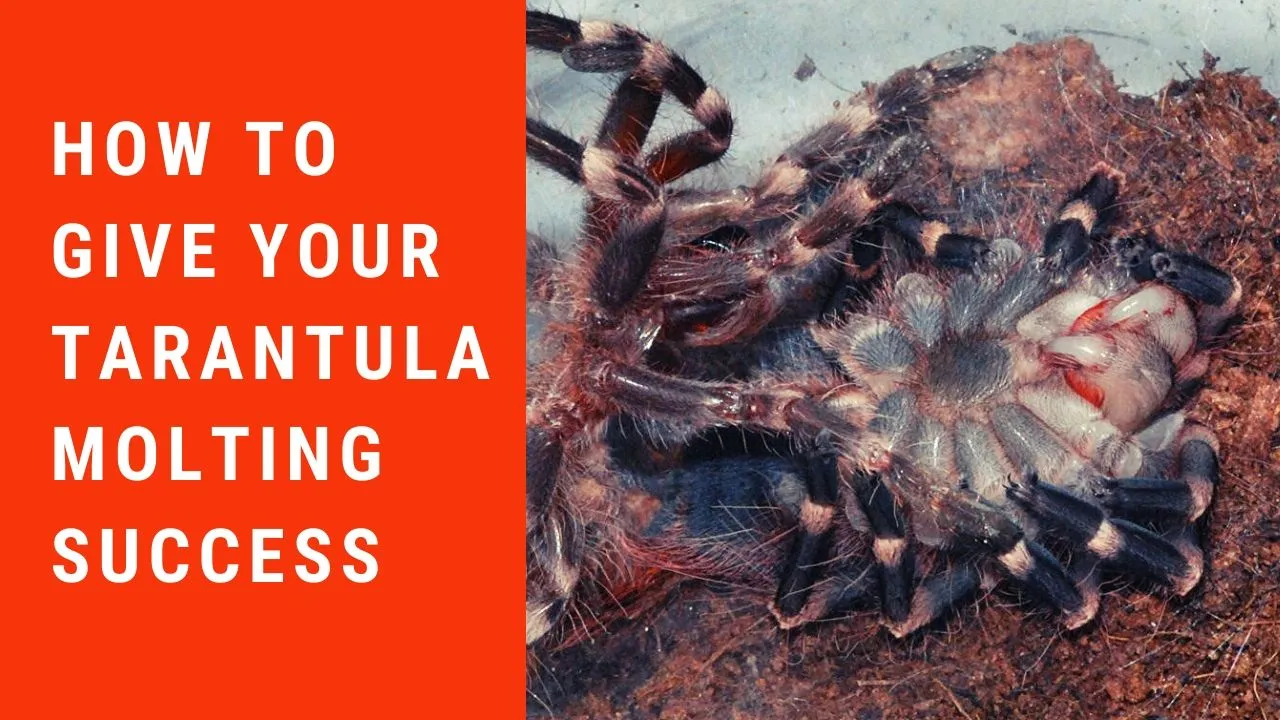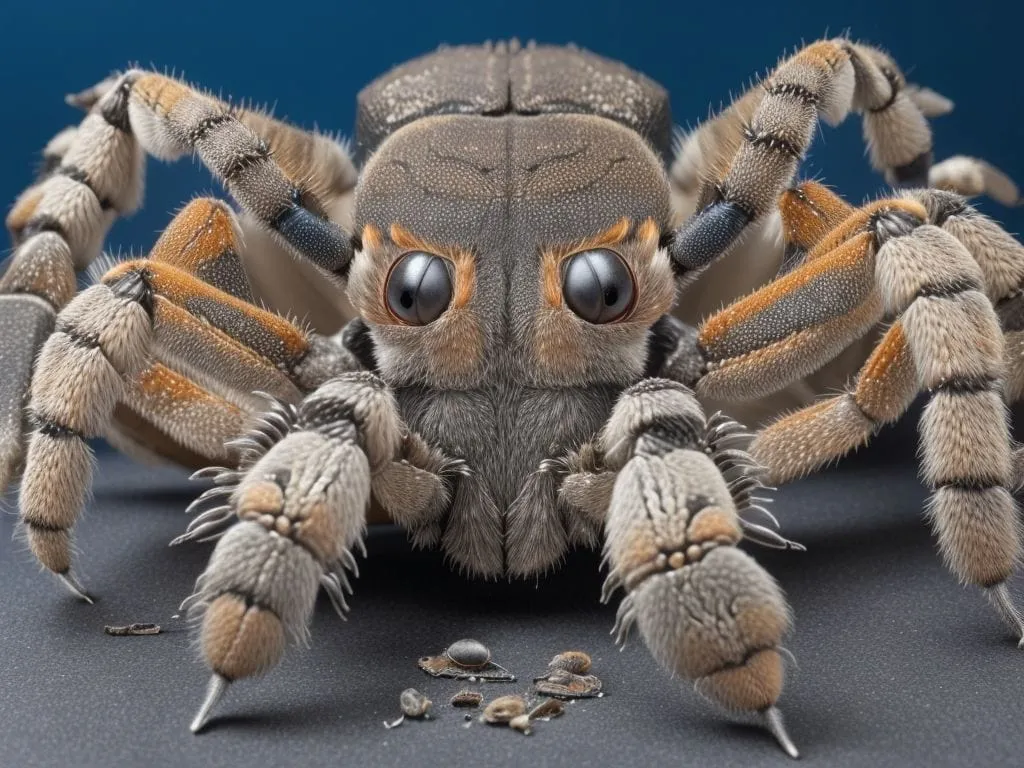What is Tarantula Molting?
Molting, also known as ecdysis, is a fundamental biological process in tarantulas, and indeed, all arthropods, including insects, crustaceans, and other arachnids. It’s the way tarantulas grow, shedding their old exoskeletons to reveal a new, larger one underneath. The exoskeleton, made primarily of chitin, doesn’t grow; therefore, the tarantula must periodically shed it to accommodate its increasing size. This process is not merely about size; it’s crucial for overall health, allowing the tarantula to replace damaged or worn-out parts, such as setae (hairs) and sensory organs. A successful molt is a sign of a healthy tarantula, while difficulties during molting can indicate underlying issues in care or environment.
The Molting Process in Tarantulas
The molting process is a complex series of events, beginning with the formation of a new exoskeleton beneath the old one. This new exoskeleton is initially soft and pliable. The tarantula will then separate the old exoskeleton from the new one, often by absorbing fluid between the two layers. This fluid helps the tarantula expand and crack the old exoskeleton. The tarantula then wriggles and contorts, working its way out of the old shell. This can take anywhere from a few minutes to several hours, depending on the size and species of the tarantula. Once free, the tarantula is incredibly vulnerable, with its soft exoskeleton. This phase is followed by the hardening of the new exoskeleton, a process that can take days or weeks, depending on the tarantula’s size and environmental conditions.
Hormonal Triggers and Environmental Factors

Several factors influence the molting process, including hormones, age, and environmental conditions. Hormones, particularly ecdysone, play a key role in initiating and regulating the molt. Age is also a critical factor; younger tarantulas molt more frequently than older ones, as they are growing at a faster rate. Environmental factors, such as temperature, humidity, and the availability of food, also affect the molting frequency and success. An optimal environment with appropriate temperature and humidity levels, coupled with a consistent food supply, will promote regular and healthy molting. Stressful conditions, such as inadequate enclosure size or poor substrate, can delay or disrupt the molting process, potentially leading to serious health problems.
Preparing for a Tarantula Molt
Preparing for a tarantula molt is critical for the safety and well-being of your pet. Once you recognize the signs of an impending molt, there are several steps you can take. Firstly, stop feeding your tarantula. Feeding a tarantula close to molting can be dangerous, as the stress of digestion can interfere with the molting process. Secondly, ensure the tarantula has access to a shallow water dish, as it will need to stay hydrated during and after the molt. Thirdly, provide a calm and undisturbed environment, minimizing any disturbances. Remove any potential hazards from the enclosure, such as heavy decorations that could fall on the tarantula during the molt. Finally, maintain the appropriate temperature and humidity levels to facilitate a smooth molt.
Creating the Ideal Environment
The ideal environment for a tarantula preparing to molt, or in the process of molting, involves maintaining the correct levels of humidity, temperature, and substrate. Humidity is particularly important; it helps keep the exoskeleton flexible, making it easier for the tarantula to emerge. Use a hygrometer to monitor the humidity levels and mist the enclosure as needed, depending on the species. Temperature should be maintained within the species’ recommended range. A temperature that is too low can slow down the molting process, while too high a temperature can be stressful. The substrate should provide a suitable surface for the tarantula to molt on, often slightly moist, and deep enough to allow the tarantula to burrow if it chooses. Avoid using substrates that could pose a hazard, such as sharp gravel.
Recognizing the Signs of an Imminent Molt

Recognizing the signs of an imminent molt is crucial for providing proper care. One of the earliest signs is a change in the tarantula’s behavior. They may become less active, spending more time in their burrow or hiding spot. They may also refuse food for several weeks before molting. Another sign is the darkening or dulling of the tarantula’s abdomen. The pre-molt tarantula’s skin will appear stretched, shiny, and the abdomen may appear swollen. You may also notice a change in the color of the tarantula’s fangs, which will be replaced during the molt. Finally, the tarantula might start to create a web mat or silk bed, in preparation for the molt. These signs indicate that a molt is coming, allowing you to prepare the environment and minimize disturbances.
During the Molt
During the molting process, it is important to observe the tarantula without interfering. Keep the enclosure undisturbed, and avoid any unnecessary handling or vibrations that could disrupt the process. It is a natural, albeit vulnerable, phase for the tarantula. Never attempt to assist a tarantula during a molt, as you could cause serious injury. Provide a shallow water dish with fresh water to ensure the tarantula remains hydrated. The tarantula may position itself in various ways during the molt, sometimes on its back, and other times on its side. The molting itself can be a long process, taking several hours, or even a day or two. Patience and observation are key.
Post-Molt Care and Recovery
After molting, the tarantula’s new exoskeleton will be soft and vulnerable. It’s important to avoid handling the tarantula until the exoskeleton has fully hardened, which can take several days or even a week or two, depending on the tarantula’s size and species. During this time, continue to provide a shallow water dish for hydration. The tarantula will likely remain hidden in its burrow or under a hide, allowing its new exoskeleton to harden. Once the exoskeleton has hardened, you can resume feeding, but start with small, easily digestible meals, such as pre-killed insects. Monitor the tarantula’s behavior and feeding response to ensure it is adjusting well to its new exoskeleton.
Feeding and Hydration

Proper feeding and hydration are crucial aspects of tarantula care before, during, and after molting. Prior to a molt, discontinue feeding to prevent complications. Post-molt, wait until the exoskeleton has fully hardened before resuming feeding. Offer small, easily digestible meals initially, such as pre-killed insects. Gradually increase the size of the meals as the tarantula recovers and its appetite returns. Provide a shallow water dish with fresh water at all times to ensure hydration, especially before, during, and after molting. This water dish should be easily accessible but also shallow enough that the tarantula cannot drown. Clean the water dish regularly to prevent bacterial growth.
Potential Problems and How to Address Them
While molting is a natural process, problems can arise. One common issue is a stuck molt, where the tarantula struggles to shed its old exoskeleton. This can be caused by low humidity, environmental stress, or underlying health problems. If you notice a stuck molt, gently increase the humidity in the enclosure and provide a calm environment. Avoid pulling on the exoskeleton, as this can injure the tarantula. Other issues include injury during molting or incomplete molts, leaving parts of the old exoskeleton attached. Prevention is key: providing a proper environment, avoiding stress, and recognizing the signs of an impending molt can minimize risks. If problems persist or seem severe, consult a veterinarian specializing in exotic animals.
Molt Issues
There are several common molting issues that tarantula keepers may encounter. One of the most serious is a failed molt, where the tarantula is unable to completely shed its exoskeleton. This can be caused by a variety of factors, including low humidity, dehydration, or underlying health problems. A stuck molt can also occur if parts of the old exoskeleton are retained, which can restrict the tarantula’s movement and growth. Other problems include damage to the tarantula’s fangs, legs, or other body parts during the molting process. These issues can be minimized by providing a suitable environment, including appropriate humidity and temperature levels. Maintaining the proper care of the tarantula, along with recognizing the signs of an impending molt, can also help prevent these problems.
Tarantula Molting FAQ

Here are some frequently asked questions about tarantula molting:
How often do tarantulas molt? Molting frequency varies depending on the tarantula’s age, species, and growth rate. Young tarantulas molt more frequently than adults.
How long does the molting process take? Molting can take anywhere from a few minutes to several hours, or even a day or two, depending on the size and species.
What should I do if my tarantula is having a difficult time molting? Ensure a calm environment and provide appropriate humidity. Do not intervene unless absolutely necessary.
Can I handle my tarantula after it molts? No, wait until the new exoskeleton has fully hardened before handling the tarantula.
What should I do with the old exoskeleton? You can dispose of it, or you can keep it as a memento. Many keepers keep the exoskeleton as a sign of the tarantula’s growth and health.
